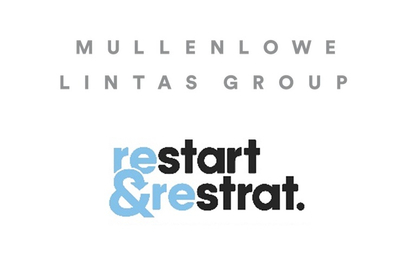What makes the Covid-19 pandemic such a destructive force? Yes, it spreads incredibly fast, is disarmingly lethal and has effectively decimated the world economy in just a few months. It has also left us grappling with a few undesirable derivatives like coping with the disruption, paranoia with a new normal and the crippling uncertainty of the future.
Though unprecedented, these can be expected in a large-scale, catastrophic, once-in-a-few-centuries event. But there is something this pandemic has triggered that is even more insidious and deadly than all the above put together.
It has altered, maybe forever, the very basis of human interaction and emotion that is universally recognised as a way of life for humankind. The sense of touch.
Ever since the early stages of evolution, touch has played a vital role in the emergence of the human race as a sensitive, emotional and empathetic species. Of course, a lot of the non-human species too, especially the higher order ones, display this preponderance for touch in their communication, but it is certainly a lot more wider, deeper and more nuanced in the case of humans, especially because relationships form such a crucial part of our social structure and touch represents the fundamental language of these relationships.
The sense of touch is so integral to the very essence of life. From the time a new born infant is reassured by the warmth of her mother’s body, the pat on the back by friends in school after a good performance that makes you stand inches taller, the electric response generated as young lovers brush their fingers against each other, the trust and respect felt by two professionals shaking hands, the protective hand of a parent over his young one’s shoulder, the warm embrace of two long-lost friends, to a frail, senior citizen yearning for a comforting touch to feel loved and cared for. In fact, all of life, and the very act of living, is touched by this one sensorial aspect.
In fact, skin that helps determine touch, is the largest human organ, weighing between 2.7 and 4.5 kg, containing super sensitive sensory receptors that can help us perceive pressure, pain, vibrations and temperature. Understandably, the role of touch is also equally enhanced amongst all the human senses.
And suddenly, almost overnight, this well-entrenched, natural human behaviour has been banished from universally accepted social etiquette. In fact, turning it totally on its head, the act of touching is now seen as a vector in the spread of an infectious virus. This, despite medical research having proven in a normal context that human touch has a tremendous positive outcome, as it releases the neuro-chemical oxytocin that induces a sense of well-being, reduces stress and improves the body’s immune system. Paradoxically, the immunity that is needed to fight the novel coronavirus is precisely what is being denied through the mandate of social distancing.
In fact, touch is an integral part of our language as well, with phrases such as stay in touch, out of touch, don’t lose touch, touch base, finishing touch, personal touch and feeling touched, conveying the ubiquitousness of this particular sensory aid. Some societies, like the Italians for instance, are never taught, “Don’t Touch!” And it’s no coincidence that their exceptionally tactile design heritage springs from possessing super sensitive hands. When you travel in Italy, you know you are in the land of embrace.
The absence of touch doesn’t just negatively impact social interactions. It has tremendous potential to disrupt the world of brands as well. Most purchase decisions involve the sense of touch. The tactile feel of a product can influence whether a person responds either positively or negatively. The responses for smooth or rough, soft or hard, wet or dry, hot or cold can be tangentially different.
Research shows that up to 75% of shoppers prefer to touch and feel a product before they decide on whether to buy it or not. In fact, a field of science known as ‘embodied cognition’ has discovered that decision-making is a function not just of the brain but of the body as well. Touch increases our propensity to buy, purely because it gives us the confidence in our decision. Yet another study has revealed that the feel of a food container can influence how a person perceives the taste of the food inside. This phenomenon of ‘sensation transfer’ is often considered by brands when packaging single-serve food products like yogurt.
Most consumers love to use their hands to connect with brands. In a shopping aisle, the instinctive reaction of the shopper is to touch and hold a product displayed on the shelves. Once they are seduced by the feel of the product, the intent to buy is not far behind. And, at times, even if they have no intention to buy, the mere feeling of touching the product provides a positive experience.
Often, the sense of touch even tends to increase the perceived value of the product. This is true of many premium, lifestyle brands. Cars are displayed in showrooms with the spotlight on them and the doors open, so that consumers can get a feel of the steering wheel, dashboard texture and plush leather seats. Mont Blanc pens, for instance, have a distinct feel based on the grip, weight and balance of the pen in your hand. Apple Stores deliberately tilt the screens of their various products, forcing consumers to correct the viewing angle and thereby subtly encouraging them to run their hands along the smooth, seductive finish of their product range. And, of course, no kid can imagine the real Xbox experience without toggling with the various buttons, switches, triggers and other controllers.
Hence, the importance of touch can never be overstated. Touch is how we know what really is out there. Even though we can see the retail environment, it does not become real until we touch it. In fact, touch is one of the key ingredients in providing the humanchannel experience in the customer journey, an experience way more engaging than any form of omnichannel experience, the current poster boy of marketing. If brands lose the power of touch, they will surely lose touch with reality.
In the immediate future following Covid-19, the sense of touch is in real danger of being relegated to the realm of nostalgia. Technological advances like Haptic, though introducing a semblance of touch on electronic devices, can never match the real feeling and connection. What then, is the alternative? Though not entirely new to marketing (it’s often discussed, but never really practiced barring a few odd here and there), it’s time to vigorously pursue the exploration of the other human senses like sight, smell, taste, and sound.
It is a known fact, that in those who are either visually or aurally challenged, the other senses like smell, taste and touch get more heightened. Humans are gifted with a wide array of senses that provide the fastest pathway to the mind. Perhaps, in the sphere of brands, we could actively innovate with products to heighten senses other than touch to maintain their distinctive seductive appeal.
Sight is a wonder. The fact is we think in images, not words. That is why all memory courses use images and visual stories to help people remember stuff. Think of the Burberry’s checked pattern, shape of Hershey’s Kisses, and MAC’s special understanding of the subtle power of colour. They are all a big part of why they are loved by their audience.
Sound builds the mood and can create feelings and emotions, inspiring joy and grief in equal measure, and it can often be the deciding factor in a consumer’s choice. The pop of a Champagne cork is one of the most evocative sounds in the world. The signature growl of Royal Enfield Bullet is part of what makes the bike so appealing. I read that beer drinkers in Brazil simply have to mouth ‘tssss’ (sound of a cap coming off a bottle) to be served their favourite chilled Brahma beer in any bar. How brilliant that sounds! Perhaps, it’s time for refrigerators, washing machines, fans and more to stop being silent machines.
Smell affects us significantly more than we can imagine. They are part of the air we breathe. Think of the smell of the hard brown coffee beans when we go to Starbucks. The aromas infusing their coffee shops or third places as they call them, occupy a distinct real estate in our brains, which we so dearly love. Similarly, Singapore Airlines was a pioneer of jet scent, spraying the distinct Stefan Floridian waters in their hot towels, a key part of the airline’s sensorial engagement. Or even the smell of freshly baked cookies of Cookie Man in several public places in India. With around 4 lakh recognizable odours in the world, we have access to an incredible stockroom of potential connections and brands shouldn’t be shy of using them as markedly as our fingerprints.
Taste, the most intimate of the senses, is something to be seen ‘out’ from human emotion rather than ‘in’ from chemistry. Though taste - sour, sweet, salty, bitter, and umami is the hardest to cater to as it is very subjective and varies from person to person, it’s possible to add it to the brand identity regardless of your vertical so long as you are willing to get a little creative. Remember! Colgate has patented its distinct taste.
Finally, a multi-sensory approach to branding can harness unparalleled energy and identity as it engages all the sensory perceptions. And in this crisis, where we will be bereft of the sense of touch, all the other senses can be leveraged to build a better, stronger and more durable brand.
Ultimately, there is no touchpoint like the human senses to experience a brand in all its dimensions. It will be tough without touch, but building a brand using all the other senses surely makes eminent sense, doesn’t it?
The author is chief strategy officer, MullenLowe Lintas Group.




.jpg&h=334&w=500&q=100&v=20250320&c=1)

.jpg&h=334&w=500&q=100&v=20250320&c=1)
.jpg&h=334&w=500&q=100&v=20250320&c=1)

.jpg&h=334&w=500&q=100&v=20250320&c=1)










.jpg&h=268&w=401&q=100&v=20250320&c=1)
.jpg&h=268&w=401&q=100&v=20250320&c=1)
